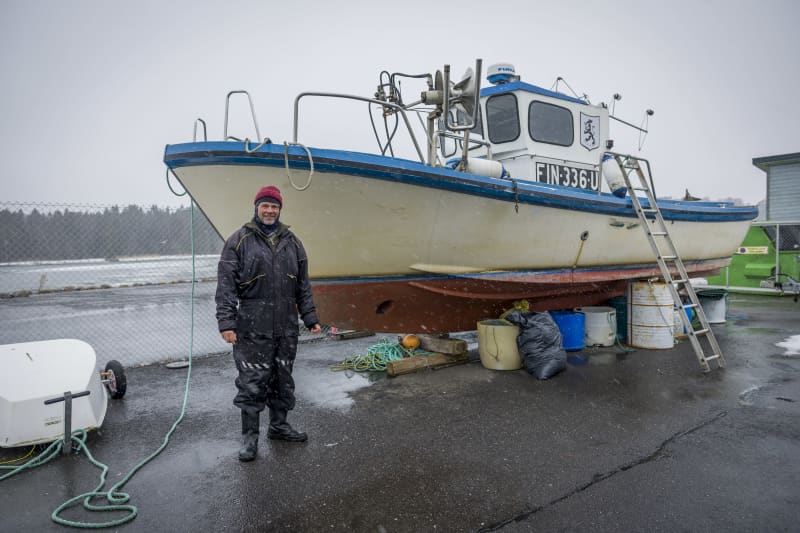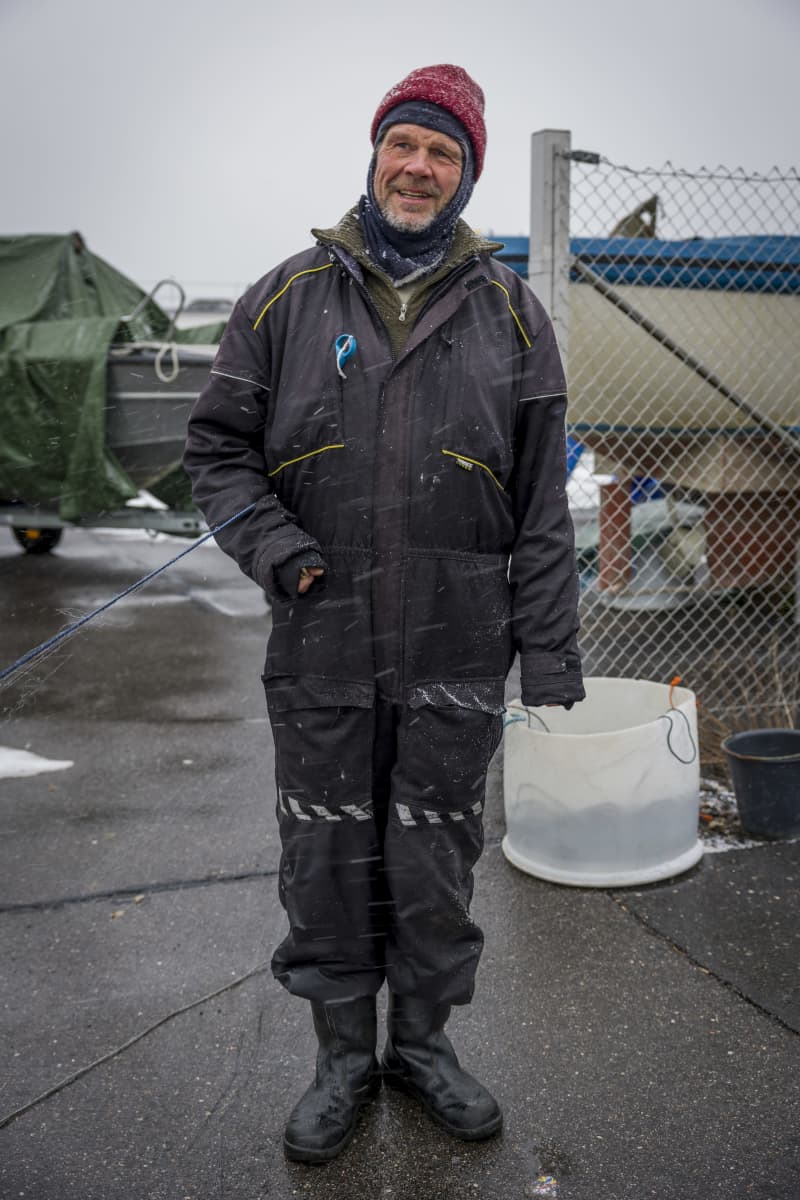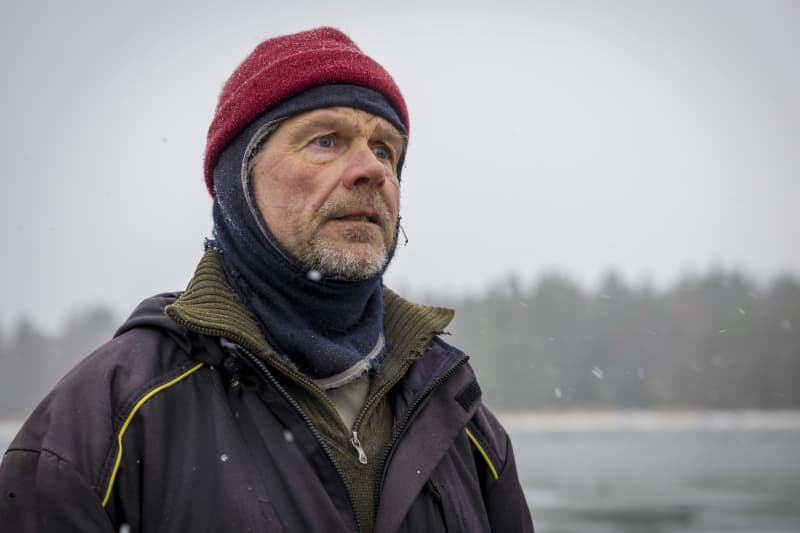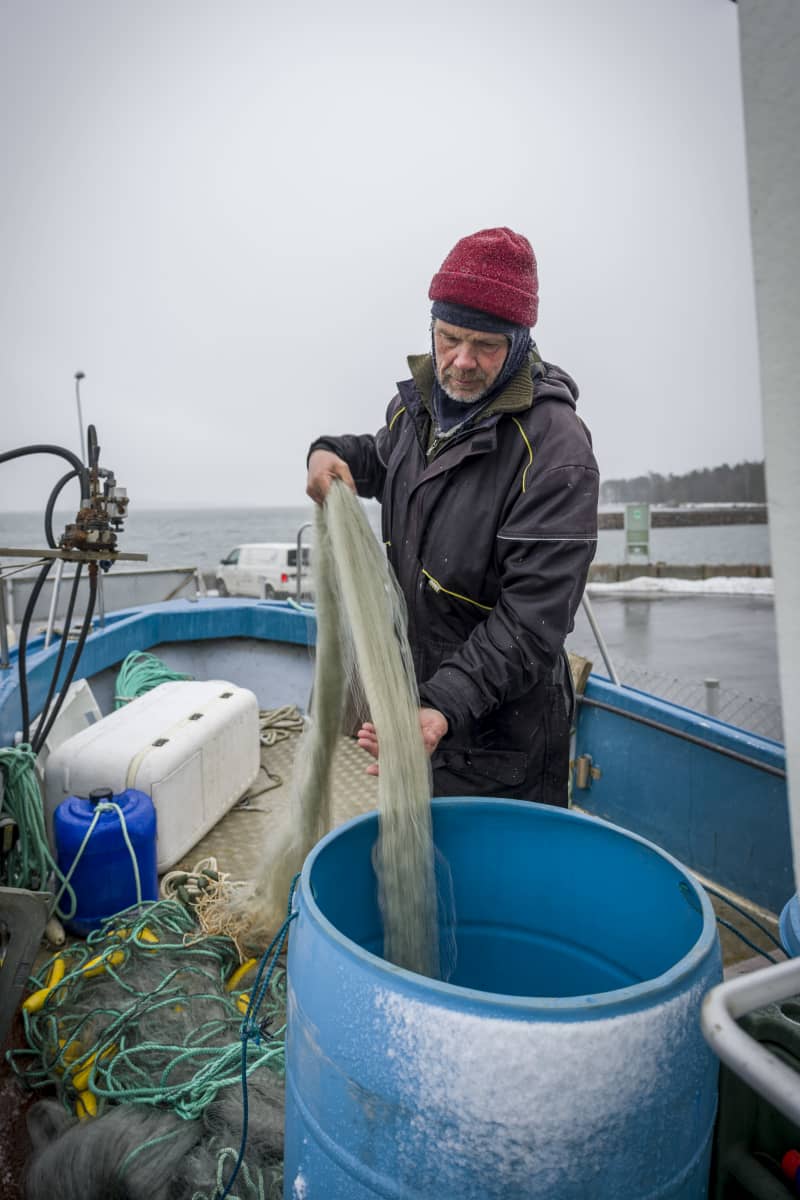The fish have echoed the fisherman’s gear. Kai Ilves, Helsinki’s only full-time professional fisherman, wonders why the passion for nature conservation doesn’t reach below sea level.
At the breakwater in the harbor of Vuosaari, visibility decreases in the intensifying spring gust, but the knife moves nimbly in the fisherman’s hand.
The seal has torn holes in the net through which the man goes. A new net must be strung between the poles.

There aren’t even any fish on the beach as props. Today, it is not due to their small number in the Gulf of Finland, but because of the error. It doesn’t get any better to go out on the ice, but the boat still can’t move because of the ice.
Ilves has been fishing in the waters of Helsinki for over 40 years.
He sees clear cause-and-effect relationships with the water and beach construction projects for fish arrivals: when you build by the sea, the fish swim.
This has happened during the construction of Vuosaari harbor in 2003–2008, during the deepening of the harbor’s entrance channel in 2020–2021, and when the Kruunusilto construction site started last year.
Beaches have been embanked and fish spawning grounds have been dredged here and there.
The impure dredging mass lifted from the seabed is dumped somewhere in the open sea. Ilves’ experience is that, in addition to the construction site, all life is practically also killed in another place for years.
The fish catch collapsed
Kai Ilves fondly remembers the time from the 1980s to the mid-1990s, when Ahti played his cards to everyone.
Then the catches started to decrease and eventually collapsed.

Now the catch is one-tenth of what it was a few years ago, he estimates.
– If you get two walleye with 50 nets, I think that’s quite good.
Fish is mostly brought to one’s own table, less often even for sale.
According to Ilves, the human-caused destruction of marine ecology is completely indisputable, but it is not talked about in public.
The last few years in particular have been turbulent in the waters of Helsinki.
When the deepening of the Vuosaari harbor channel was completed and the fish population could have started to recover, construction of the country’s largest bridge, Kruunusilto, began on Kruunuvuorenselkä.
– It seemed like the most terrible thing of all. The sea water also turned greenish gray in Vuosaari. Visibility was poor, and the fish were totally missing. The jacking, piling and crane driving out of there were the last rivet, Ilves describes the change.
He asks how meaningful it is to build on top of the sea, considering the extensive dredging it requires, the dumping of dredging waste and the underwater noise.
Fish are also taxed by seals and fishing during spawning
In reality, the catches of several species by fishermen have been decreasing for years on almost the entire coast of Finland.
There are several reasons.
In addition to construction in Helsinki, fish stocks are taxed especially by overfishing during the spawning season and by seals.
Even for recreational fishermen, even more fishing trips result in only memories of the beautiful archipelago and fresh air.

The stocking of fish has not been able to restore the stocks of prey fish. No one can really tell one reason for the disappearance of planted chicks. Among other things, it has been speculated that the heredity of hatchlings would have weakened so that they cannot protect themselves and become prey themselves.
Fish monitoring has been done at the Kruunusilto site before construction started in 2018 and after the site started last year. The report on possible changes has not yet been completed. Information is expected this spring.
It is known that even underwater noise can drive away fish. However, other fish species can benefit from underwater structures.
– There are also indications that bridge construction sites can attract fish to new shelters, says Linder.
Linder himself fishes on Kruunuvuorenselka. He says that he was surprised when he saw large schools of fish near the bridge construction site on the sonar last fall, even though they were only roach.
What would an artificial island do to marine life?
Water construction is not stopping in Helsinki, on the contrary.
The scenery of Puotila’s marina is changing in the next few years, when part of the boat berths will be moved to Vuosaari and new residential blocks are planned for the beach.
One of them is going to be erected on an artificial island.
Fisherman Kai Ilves is worried about the harm to marine nature caused by the dredging associated with the artificial island. According to Ilves, Matala Vartiokylänlahti is one of the few spawning grounds for walleye in that direction.
– When you know how much mud is under the Puotila marina, then how do you know how to remove it from there so that the entire bay is not destroyed.

When reading the urban ecological plan for the Puotila harbor water area, or Vartiokylänlahti, it becomes clear that the planners have identified Mellunkylä’s trout stream and Broända’s stream as important spawning grounds for fish.
It also states that the bay is an important recreational fishing area, where pike are mainly fished.
There are no mentions of the actual protection of fish or breeding grounds in the two tens of pages of reports.
It is stated that there is room for further investigation and clarification, among other things, in *\”the effects of the fill land area and shoreline design on the flow conditions of Vartiokylänlahti and the development possibilities of the underwater environment\”*.
According to preliminary information, construction of the beach in accordance with the draft plan, which is also an artificial island, would not cause significant effects on the marine ecology of the area.
The project is at the beginning and the permit for the artificial island according to the Water Act is still missing. The ely center will decide on that in due course.
For herring fishing in April
The harbor bay of Vuosaari is frozen, but on the other side of the breakwater the sea is already undulating freely.

Professional fisherman Kai Ilves is not about to give up after all. He hangs out on the deck of his docked ship, not caring about the pursuit.
The movement stops when he spots a cormorant breaching the shoreline. It’s yet another sure sign of spring.
You can swim near the shores in large schools of herring already in April.
Ilves’ densely meshed herring net is ready, folded in the barrel, waiting for it.
*You can discuss the topic until Thursday, April 6 at 11 p.m.*
